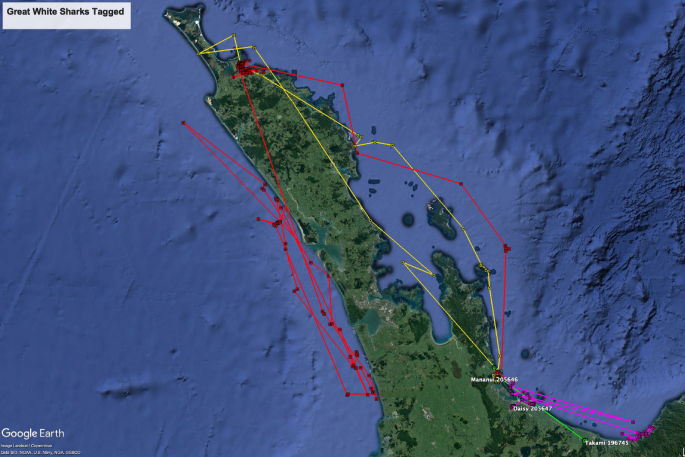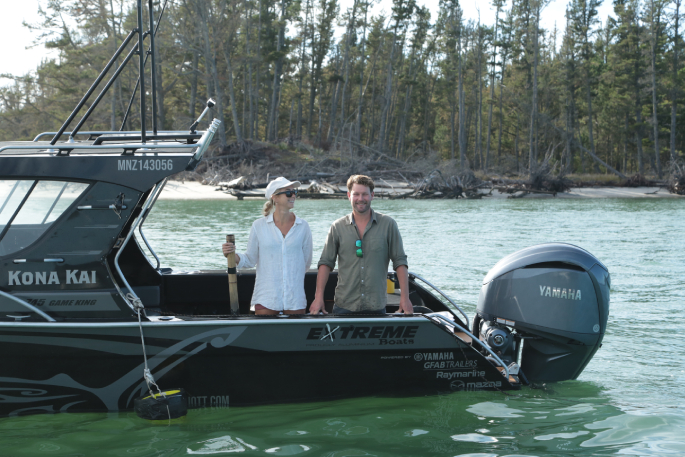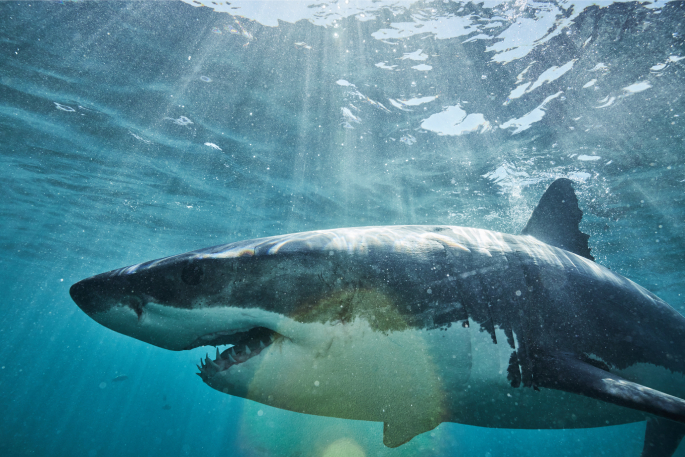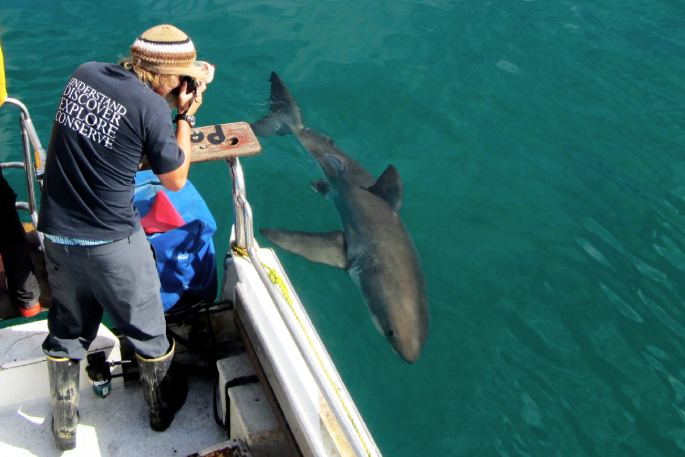Dr Riley Elliott – known as Shark Man – is keen to push on with his research of great white sharks in the Bay of Plenty region and Aotearoa this year.
The Tairua scientist established the Great White Project, which involved satellite tagging a new and growing population of juvenile great white sharks in the region from December 1, 2022.
Data from the public-sponsored satellite tags is displayed free to the public on The Great White tracking app, which means people have been able to track four tagged sharks in real-time.
Now, more than a year since starting the project, and the four tags having been released from the tracked sharks, Dr Riley Elliott caught up with The Weekend Sun on his findings so far and his goals for 2024.
“We’ve discovered in the Bay of Plenty region that we have these brand new baby young of the year, new-born great whites, which may suggest that this could be where they [pregnant sharks] pup the sharks for the entire Southwest Pacific population,” says Riley.
“What we’ve learned so far, which has been great, is that these sharks move around our entire coastline.
"They do prefer some areas, it seems – and, so the more we understand where those areas are and what they’re doing there, and how that overlaps with us, the better we can make decisions about how we play in the ocean.”
 Great White shark tag map.
Great White shark tag map.
Riley, who began tagging sharks for the Great White Project in December 2022 and has been collating research since says the goal is “to address conservation and public interest questions relative to a seemingly growing and emerging new population of great white sharks in the North East New Zealand region”.
“The proof has been in the pudding.
"These are small sharks that mostly eat fish, crabs and stingrays.
“Sharks like the infamous Daisy were hanging out right in the middle of the flags the first day of school holidays [earlier in 2023] and there were no adverse interactions because these sharks don’t hunt people, they hunt small fish."
“We started tagging last summer and we tagged four great whites.
"Then the floods happened, and tracks of those sharks reflect that everything in that harbour area left because of the floodwater."
“Those four sharks went north and east...did some amazing tracks, went all the way around to the west coast-side [of NZ] then eventually, at the end of [last] summer, one of them came all the way back to Bowentown.”
 Riley Elliot and wife Amber Jones (left). Photo: Supplied.
Riley Elliot and wife Amber Jones (left). Photo: Supplied.
Riley says it’s very difficult to find these great whites when you’re one boat “which is why public observations and sightings are super useful and important”.
“I much appreciate those being sent to me, because it helps me identify where to work.”
Riley also thanks the public for their patience and to those who have funded tags.
“I still have 20 tags and we’ll look to try and get out as many of those as we can this summer, catering for the fact that it hopefully will be much better weather, much more stable oceanic conditions, but with that, it might entirely redistribute where these great whites are.”
Riley also hopes the tags will stay on for longer this time.
“There was so much debris, slash and weed and stuff like that in the ocean from the floods [last year] that they got pulled out early, but the public involvement in this was so amazing that we got all those tags back.”
With the four tags coming off – which is the planned methodology because the tags are designed to be least invasive by darting them onto the sharks, and that they come off – now the plan is to tag more.
To achieve more taggings this summer, Riley asks for the New Zealand public to report to himself and to the Department of Conservation any sightings or interactions with Great White Sharks.
 Great White shark. Photo:Supplied.
Great White shark. Photo:Supplied.
Meanwhile, Riley is also planning work with Australian shark scientists to use genetic samples to see the relations between sharks here and those in Australia – with the Great White a vulnerable species with a decreasing population.
Genetic research to date suggests there may only be about 50 mature Great White sharks mating each year in the SW Pacific population, a very small number, Riley says it’s incredibly special to have an emerging young population of great whites here in the BOP.
“We should be proud that that reflects a very healthy ecosystem that one of the most awesome animals on earth has decided to use it as its nest.”
Riley says it’s a legal obligation to report capture of any Great White shark, and is incredibly helpful to report sightings.
To report a catching or sighting, call 0800 DOC HOT (0800 362 468), email: sharks@doc.govt.nz and Riley at: nzsharkman@gmail.com
Subscriptions for the Great White app cost $5 to fund the online paltform's ongoing cost, says Riley.
"But the app will always be free on the website: www.sustainableoceansociety.co.nz

